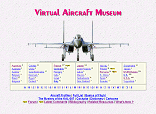|
|
|
Geoffrey de Havilland built his first (unsuccessful) aircraft
in 1909. His second, flown in 1910, was bought by the
War Office, and de Havilland was taken on as designer at
the
 | | D.H.4 |
Balloon Factory (later Royal Aircraft Factory), where
between 1911 and 1914 he designed the F.E.2, S.E.1,
S.E.2, B.E.1, and B.E.2. In 1914 he joined the Aircraft Manufacturing
Company at Hendon, designing the D.H.2
pusher fighter, D.H.3, and D.H.10 twin-engined bombers,
D.H.5 fighter, and D.H.4 day bomber. The latter was extensively
built in the
 | | D.H.53 Humming Bird |
U.S.A..The D.H.9 and 9a were variations;
the 9a equipped post-war RAF bomber squadrons and it,
too, was built in the U.S.A.. Nearly 3,000 were constructed
in Russia as the R-1.
The D.H.53 Humming Bird ultralight was the best entrant
in the 1923 Air Ministry Light Aeroplane competition, but
de Havilland realised that their
 | | D.H.66 Hercules |
passion for lightness was
an error, and in 1925 produced the first Moth to more sensible
proportions. Perhaps the most famous light aircraft
ever built, it was sold all over the world. A number of cabin
monoplanes and a military version, the Tiger Moth, followed;
over 8,000 Tigers were built for various
 | | D.H.98 Mosquito |
air forces.
The three-engined D.H.66 Hercules was flown by Imperial
Airways from 1926, and in the 1930s many domestic
and foreign airlines used the twin-engined D.H.84/89
Dragon/Dragon Rapide and four-engined D.H.86 Express.
In 1934 de Havilland designed the all-wood D.H.88
Comet twin-engined racer for entrants in the "MacRobertson"
England-Australia race. At a fixed unit
 | | DH.100 Vampire |
price of GBP5,000
this gamble paid off; three were entered, and one of these
won the speed prize. By 1939 the firm was producing the
D.H.91 Albatross, a fast airliner with four engines; the twin-engined
D.H.95 Flamingo feederliner and the diminutive
D.H.94 Moth Minor. All production of these ceased at the
outbreak of
 | | D.H.106 Comet |
war, which also cut short a promising bombertrainer,
the D.H.93 Don. In 1938 work started on a fast
unarmed wooden bomber, the D.H.98 Mosquito. It became
one of the most versatile aircraft of its time, and by the end
of the war a single-seat fighter version attained a speed of
760km/h. The
 | | "Trident" |
Vampire, de Havilland's first turbojet
fighter, Venom, Sea Venom and later Sea Vixen, served
for a decade after the war.
Back in civil work, the company produced the twin-engined
Dove, four-engined Heron and, in 1949, the first
jet airliner in the world, the D.H.106 Comet. The Comet 1
ran into constructional problems, but
 | | HS.125 |
the Mark IV achieved
success. The last DH designs were the D.H.121 Trident, a
three-engined airliner for BEA, and the D.H.125 executive
jet (both first flown 1962). Both were still in production in
1978, long after the company's absorbtion into the Hawker
Siddeley Group in 1960, and the D.H.125's successors
were still in production at the turn of the new century.
Back to the letter D

|
|

All the World's Rotorcraft
Virtual Aircraft Museum
Biplane 1
Biplane 2
D.H.2
D.H.5
D.H.4
D.H.9
D.H.16
D.H.18
Doncaster
D.H.34
D.H.37
Derby
Dormouse
D.H.50
D.H.53 Humming Bird
Highclere
D.H.51
D.H.60 Moth
Hyena
D.H.66 Hercules
Hound
D.H.71 Tiger Moth
Giant Moth
Hawk Moth
D.H.77
D.H.80 Puss Moth
D.H.72
Swallow Moth
D.H.82 Tiger Moth
D.H.83 Fox Moth
D.H.84 Dragon
D.H.85 Leopard Moth
D.H.89 Dragon Rapide
D.H.86
D.H.87 Hornet Moth
D.H.88 Comet
D.H.90 Dragonfly
Dolphin
D.H.91 Albatross
D.H.93 Don
D.H.94 Moth Minor
D.H.95 Flamingo
D.H.98 Mosquito
DH.100 Vampire
Hornet / Sea Hornet
D.H.104 Dove / Devon
D.H.108
D.H.112 Venom
D.H.106 Comet
D.H.114 Heron
D.H.110 Sea Vixen
|











